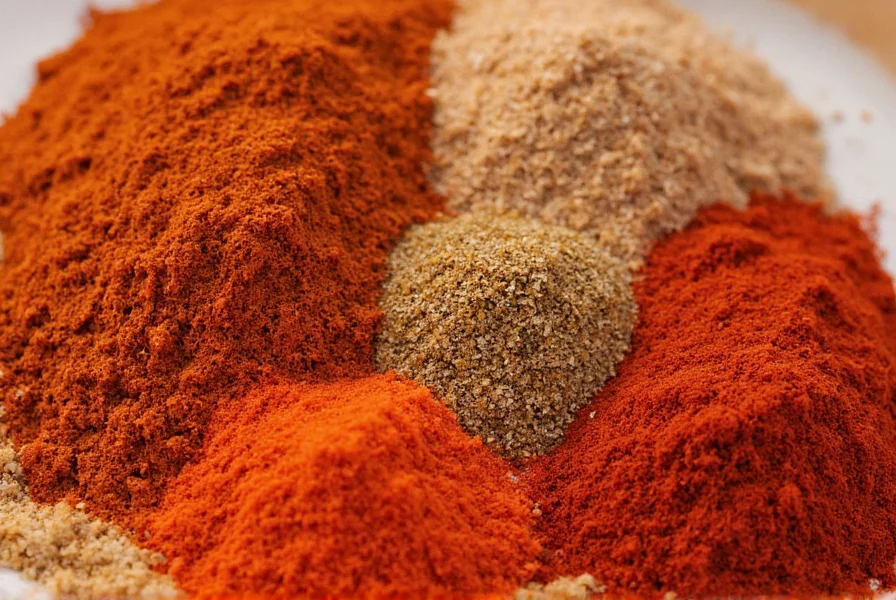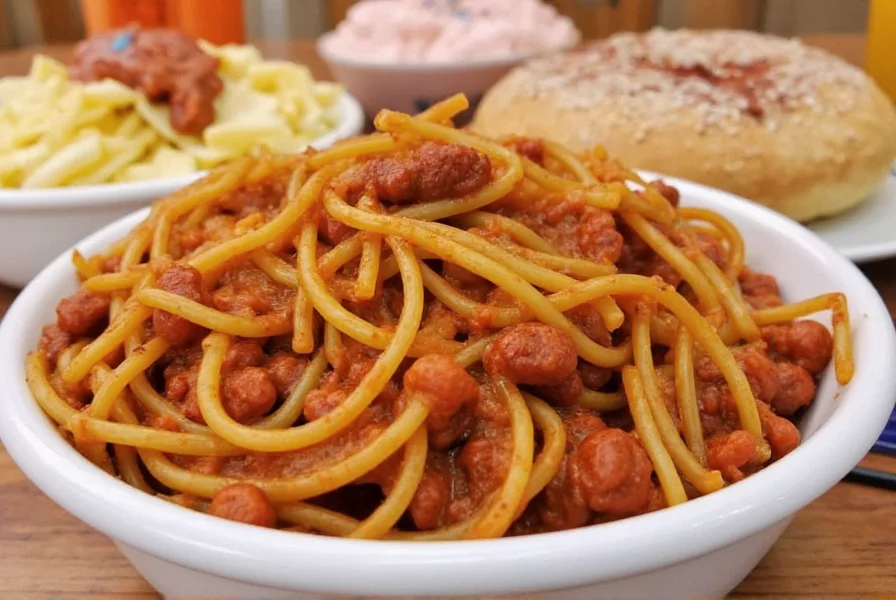Originating in the 1920s from immigrant restaurateurs, Cincinnati chili has evolved into a beloved culinary tradition with its unique preparation method and distinctive flavor profile. The "5-way" represents the most complete version of this iconic dish, combining five essential components that create the perfect balance of textures and flavors.

The Evolution of Cincinnati Chili
Cincinnati chili traces its roots to Macedonian and Greek immigrants who adapted their native meat sauces to American ingredients in the early 20th century. The first chili parlor, Empress Chili, opened in 1922 and established the foundation for what would become Cincinnati's signature food. Unlike Texas or New Mexico chili, which focuses on meat and chilies, Cincinnati chili incorporates warming spices like cinnamon, allspice, and cocoa powder, creating a sweet and savory profile that complements spaghetti perfectly.
Understanding the "Ways" System
The "ways" system is Cincinnati chili's unique ordering convention that allows customers to customize their dish. This standardized terminology helps both locals and visitors navigate menu options with ease. The system works as follows:
| Way | Components | Description |
|---|---|---|
| 2-way | Chili + Spaghetti | Basic serving of chili over spaghetti |
| 3-way | Chili + Spaghetti + Cheese | Most popular option with shredded cheddar |
| 4-way | 3-way + Beans or Onions | Customizable with either kidney beans or onions |
| 5-way | Chili + Spaghetti + Cheese + Beans + Onions | Complete experience with all traditional toppings |
What Makes the 5-Way Special
The 5-way represents the most comprehensive Cincinnati chili experience, combining all traditional elements into one harmonious dish. Each component serves a specific purpose:
- Spaghetti - Serves as the base, typically cooked al dente to maintain texture under the chili
- Chili - The signature meat sauce made with ground beef, tomato sauce, and distinctive spices
- Shredded cheddar cheese - Melts into the hot chili, creating a creamy texture and balancing the spices
- Kidney beans - Adds protein and earthy flavor that complements the sweet-spiced chili
- Onions - Provides freshness and sharp contrast to the rich chili
Many locals consider the 5-way the definitive Cincinnati chili experience, offering the perfect balance of all elements that define this regional specialty. When properly prepared, the cheese melts into the hot chili, the beans add heartiness, and the onions provide a refreshing contrast to the rich meat sauce.

Authentic Preparation Methods
Creating authentic Cincinnati chili requires attention to specific preparation techniques that distinguish it from other chili varieties. The meat sauce begins with browning ground beef, then simmering with a distinctive spice blend that typically includes:
- Worcestershire sauce
- Cinnamon
- Allspice
- Clove
- Chocolate or cocoa powder
- Vinegar
The chili simmers for several hours to develop its complex flavor profile, then is strained to create a smooth, pourable consistency. Unlike traditional chili, Cincinnati-style chili contains no kidney beans in the meat sauce itself—the beans are added separately as a topping. The final dish always includes oyster crackers on the side, which many locals crumble into the chili for added texture.
Where to Experience Authentic Cincinnati Chili
While Cincinnati chili restaurants have expanded beyond Greater Cincinnati, the most authentic experiences remain in the city and surrounding areas. Iconic establishments like Skyline Chili, Gold Star Chili, and Dixie Chili have been serving Cincinnati's signature dish for generations. Each restaurant has subtle variations in their spice blends and preparation methods, creating friendly local debates about which serves the best chili.
Visitors to Cincinnati should note that chili parlors operate with a distinctive service style—counter service with minimal seating, paper trays for serving, and a focus on quick, efficient service. This reflects the dish's origins as affordable, working-class food that has evolved into a cultural institution.
Common Misconceptions About Cincinnati Chili
Many people unfamiliar with Cincinnati chili make assumptions based on the word "chili" alone. The most common misconceptions include:
- That it contains significant amounts of chili peppers (it typically has minimal heat)
- That it's similar to Texan or Southwestern chili (it has completely different flavor profiles)
- That it's served in a bowl as a soup (it's always served as a topping for spaghetti)
- That it contains beans in the meat sauce (beans are always a separate topping)
Understanding these distinctions helps appreciate Cincinnati chili as its own unique culinary tradition rather than a variation of other chili styles.
Frequently Asked Questions
What makes Cincinnati chili different from regular chili?
Cincinnati chili differs significantly from traditional chili in several ways. It features Mediterranean-inspired spices like cinnamon, allspice, and cocoa powder rather than chili peppers as the primary flavoring. It's served as a topping for spaghetti rather than as a standalone soup or stew. Cincinnati chili contains no beans in the meat sauce (beans are added separately as a topping), and it's typically much milder in heat while being more complex in flavor profile.
Why is it called a "5-way" when there are five components?
The "ways" system refers to the number of components in the dish, but the counting begins with the spaghetti as the base. A "2-way" includes spaghetti plus chili, while each additional topping increments the "way" count. The 5-way includes all five traditional elements: spaghetti, chili, cheese, beans, and onions. This naming convention developed organically in Cincinnati chili parlors as a quick way for staff to communicate orders.
Does Cincinnati chili contain chocolate?
Many authentic Cincinnati chili recipes include a small amount of unsweetened chocolate or cocoa powder, which contributes to the dish's distinctive flavor profile. The chocolate isn't detectable as a sweet element but rather enhances the complexity of the spice blend and helps balance the acidity of the tomato components. This technique reflects the Mediterranean culinary influences that shaped Cincinnati chili's development.
Can you make Cincinnati chili vegetarian?
Yes, vegetarian versions of Cincinnati chili are possible by substituting the meat with textured vegetable protein, lentils, or mushrooms. The distinctive spice blend remains the same, and the dish is still served over spaghetti with the traditional toppings. Many Cincinnati chili restaurants offer vegetarian options that maintain the authentic flavor profile while accommodating dietary preferences.











 浙公网安备
33010002000092号
浙公网安备
33010002000092号 浙B2-20120091-4
浙B2-20120091-4